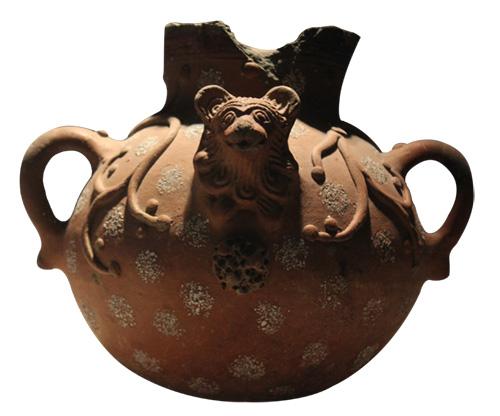
Historical Archaeology
Sala
The excavations at the Temple Mayor uncovered many objects corresponding to the Spanish occupation. One of the earliest objects from this period is a colonial column base showing the reuse of prehispanic religious sculptures in the construction of New Spanish buildings. Also found were heraldic shields used by noble families, both Creole and Peninsular, with designs corresponding to their family names, which were placed on the facades of houses to distinguish one family from another.
From 1541 onwards, the conquered Mexicas began learning European pottery techniques, such as glazing and the use of the potter’s wheel, influencing the shapes and styles of their ceramics. The blown glass technique began in Puebla in 1542, while flat glass for windows and stained glass was not developed until the 19th century. Mosaic tiles of Arabic origin also became prevalent during the Colonial period, and numerous examples of this technique were found during the Temple Mayor Project and the Urban Archaeology Program. Additionally, many metal objects corresponding to various stages of Mexican history were discovered. Notably, a colonial offering found in the Chapel of Souls was engraved with the date 1721.


